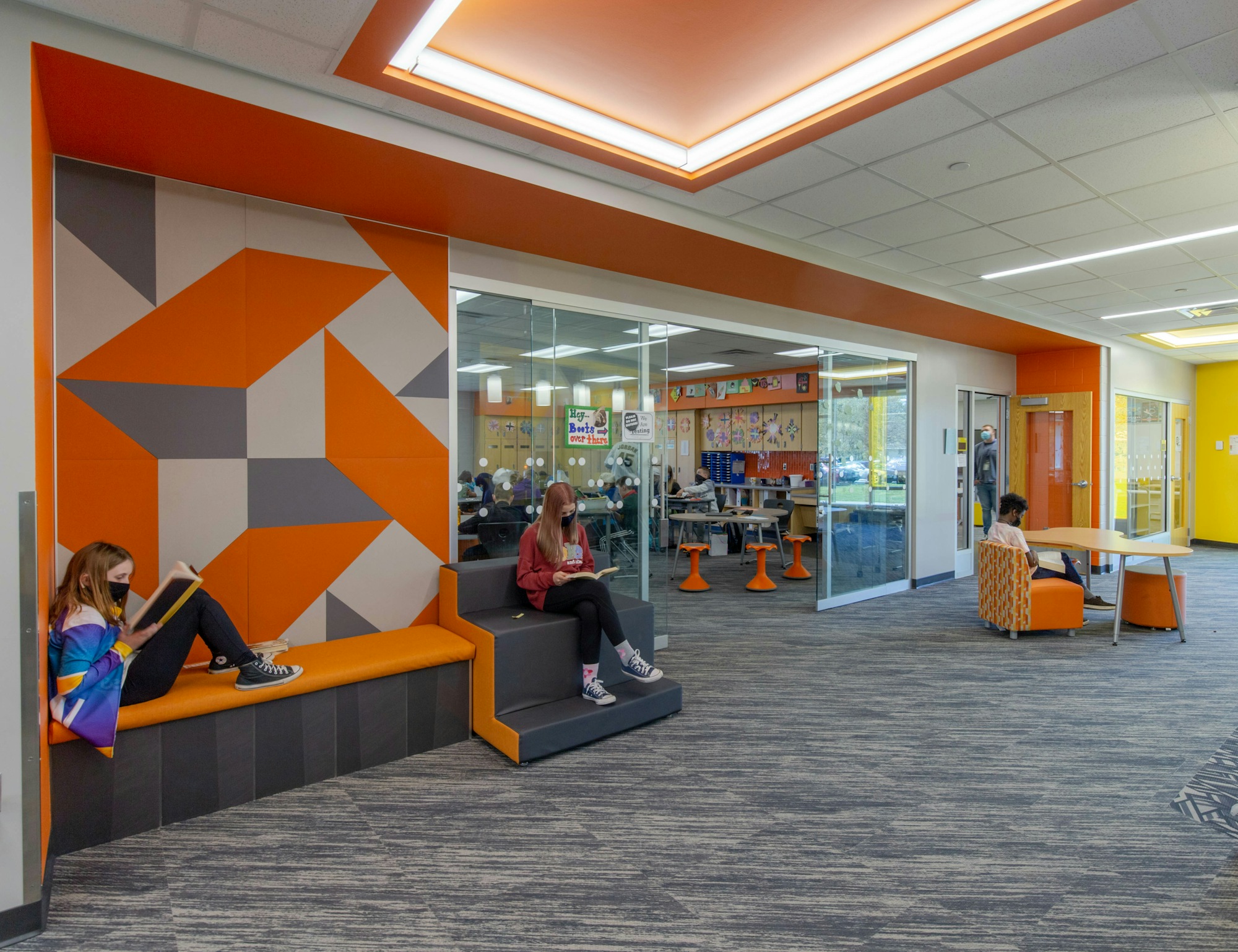
Mounds View Public Schools is the 11th largest district in the state of Minnesota. Home to over 11,600 students, the district encompasses 14 schools. In 2017, the community passed a $164.8M referendum, voicing a desire for district-wide improvements. These drivers for change include a growing enrollment, facility maintenance needs, an underlying desire to create more equity and a modernization of buildings with flexible learning. Mounds View Public Schools partnered with Wold Architects and Engineers to assist in these improvements.
The COVID-19 pandemic began at the end of the design phase and in the middle of construction for some projects. which put numerous preconceived notions to the test. Although undesired, the pandemic’s silver linings involved an enhanced understanding of what learning can look like for students in flexible environments. Below are our top five pre/present pandemic learnings towards equitable and innovative district planning.
Transforming how students and the community-at-large feel about their facilities have a tangible impact on student engagement. As planners, providing students voice & choice, or the opportunity to choose to learn the way they learn best, throughout the planning process helps promote student agency. One example of students’ voice & choice during the planning process with Mounds View was furniture selection. Student input sessions were instrumental in the furniture selection process by testing pilot furniture, answering surveys and other methods of providing feedback which ultimately lead to a new set of furniture standards for the District. Furniture selected by students also played a key role in adjustments for the pandemic.

Although conversations of the pandemic may be tiresome at this point in time, it is our belief that we should ensure school facilities are resilient enough to handle whatever comes next. Maximum flexibility is key. Because of this, districts should routinely consider how existing spaces can be leveraged to prepare for necessary adjustments. Newly furnished flexible spaces at Mounds View became invaluable during the pandemic as mandatory shifts to social distancing & hybrid learning arose. For example, at Sunnyside Elementary School, flexible spaces allowed teachers advanced opportunities to spread students out to accommodate for social distancing. By creating a more flexible environment, districts will have a head start on future global health crises or whatever comes next.

Committed to its overall equity promise, one of Mounds View’s main facility drivers centered around an underlying desire to develop inclusive facilities that uplift all individuals. The solutions to this were not predetermined. However, establishing needs before the planning process was crucial to understanding overall goals and where improvements could be made. Analyzing maintenance needs, enrollment, finances, and educational priorities to better inform a community task force was essential. The nature of learning spaces was also questioned, which brought new insights to the table, including dominant themes of collaboration and cross-communication. An example of solutions tied to inclusivity includes the commons spaces at Irondale High School. These spaces help create a sense of identity and community, while creating new opportunities for students.

Today’s competitive educational environment makes it essential for school districts to promote what makes them unique. To attract students to their schools, districts must have a competitive advantage in marketing their educational opportunities. Mounds View was beginning to transition from traditional curriculum to increased student agency, project-based learning, and college and career-focused options. Because of this transition, physical spaces designed through the referendum centered around manifesting these emerging educational changes. Design choices were maximized to positively affect students with innovative opportunities. These new opportunities provide a competitive advantage amongst other districts in the area.

Before the referendum passage, projections showed that an additional 1600 students would be attending Mounds View when the area’s housing developments are complete. Determining a plan for this growth, the school district’s priority was not to disrupt attendance boundaries. Instead, there was a strong emphasis on creating capacity where needed. Instead of new buildings, schools across the Mounds View district were renovated and added onto to accommodate this growth, creating new learning environments within current facilities to offer innovative program opportunities.

The COVID-19 pandemic put the connection of learning and our built environments to the test. Because of this, we could reimagine what education looks like for students. If you are a district, when you reflect on your time throughout the pandemic, what challenges did you encounter? What pre/post pandemic learnings could be applied to your goals moving forward? To learn more about how we can assist in the future with planning in your district, do not hesitate to reach out to our team at Wold Architects and Engineers.